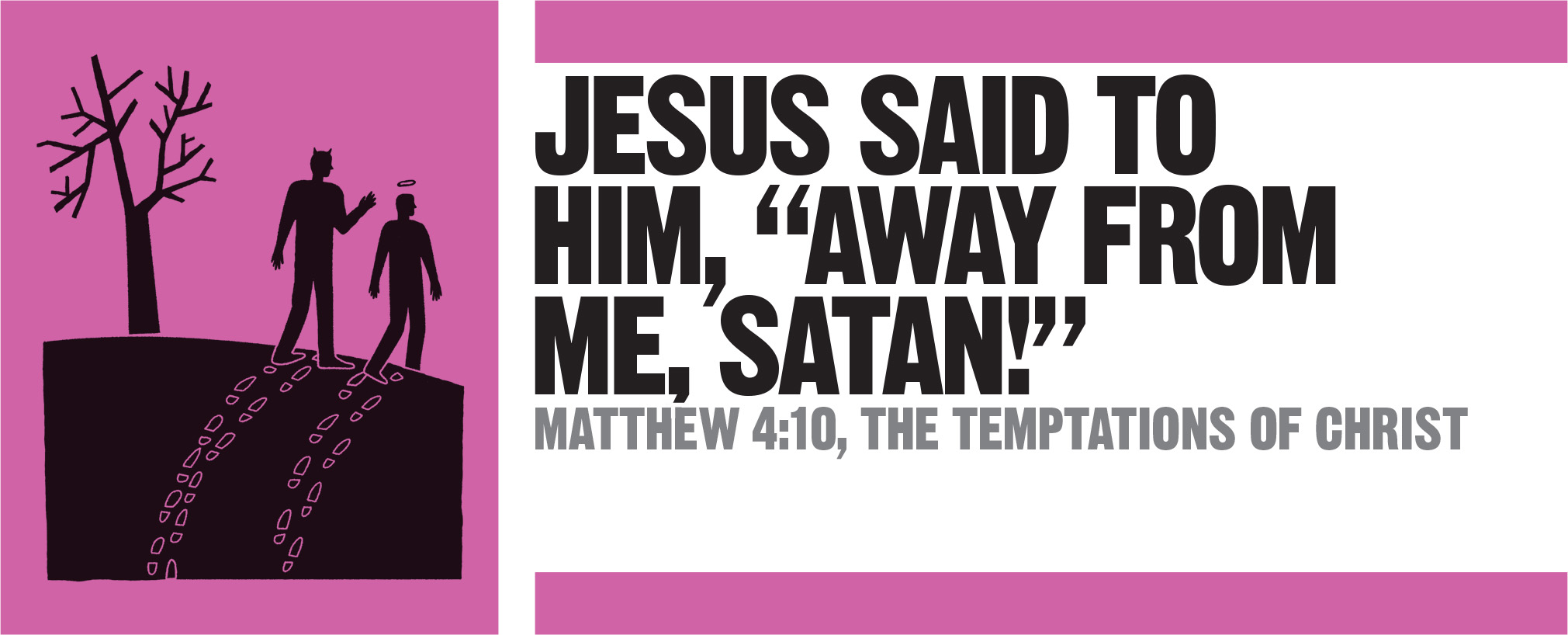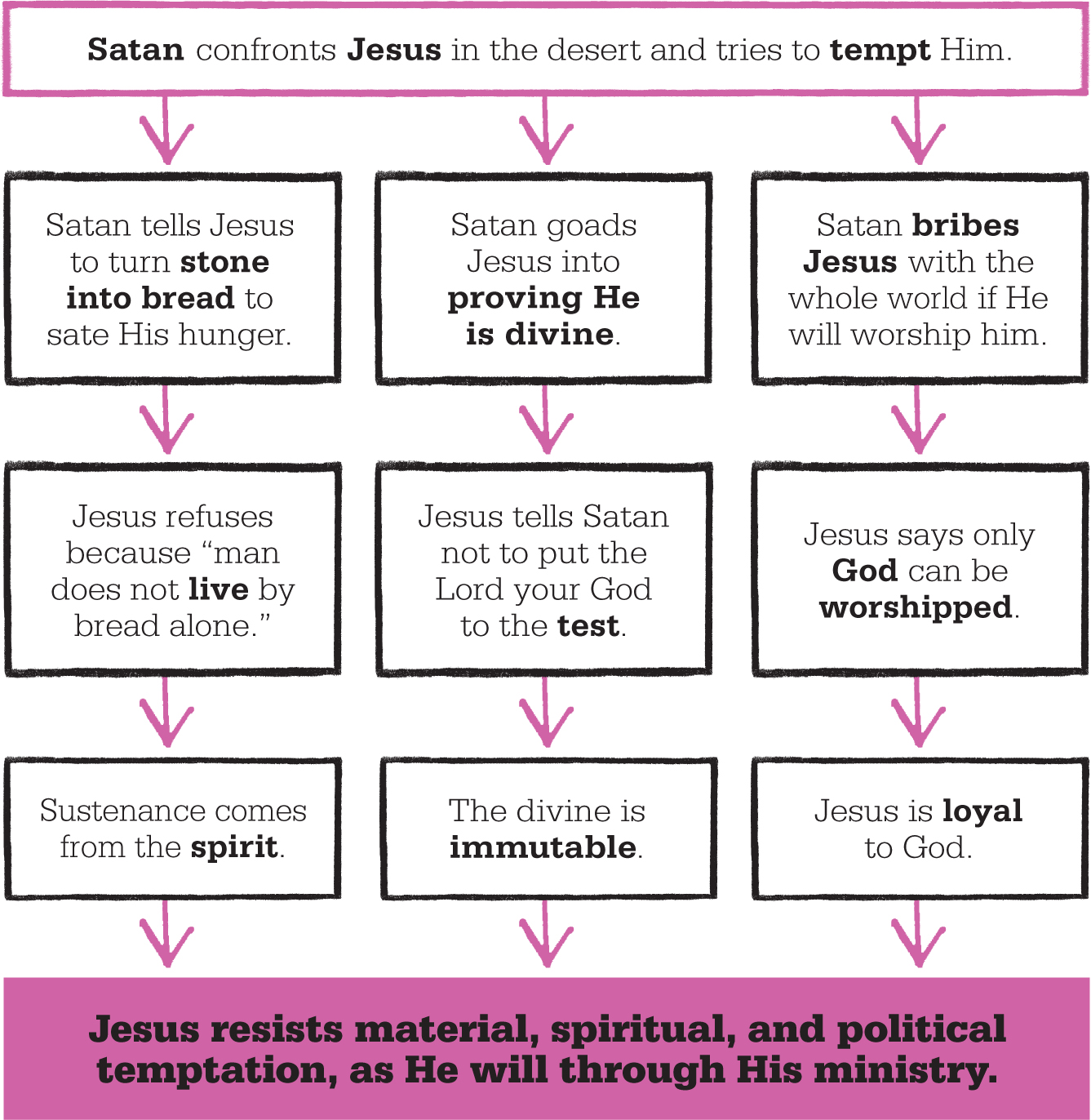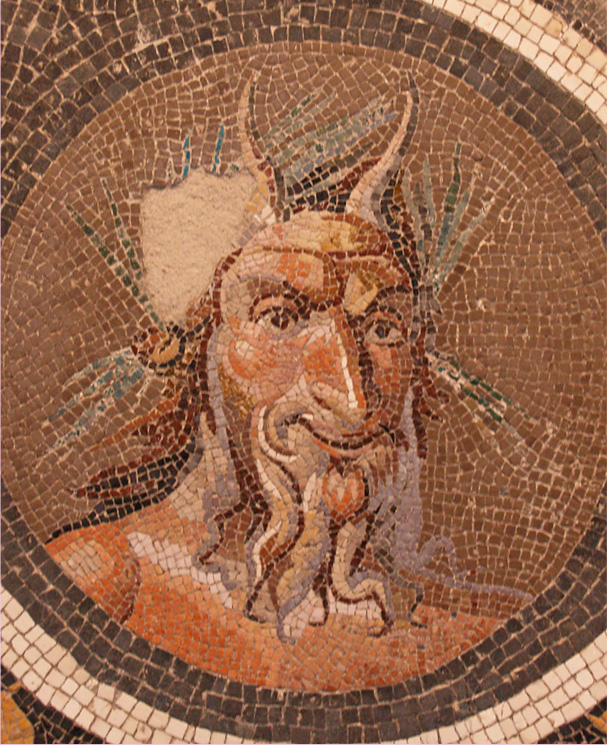
IN BRIEF
Matthew 4:1–11; Mark 1:12–13; Luke 4:1–13
Resisting temptation
c.26–27 CE The Judean Desert, near the Dead Sea.
Jesus The Messiah and Son of God at the start of His ministry, recently baptized by John the Baptist.
Satan The accuser and tempter, whom early Christians later identify as the serpent in the Garden of Eden and the great dragon of Revelation.
The temptations of Jesus in the wilderness are a theological battle between Jesus and Satan. Both figures quote the Old Testament—Satan to taunt Jesus into proving that He is the promised Messiah, beginning each of his challenges with the words “If you are the son of God” (Psalm 91:11, 12), and Jesus to assert His divinity: “Do not put the Lord your God to the test” (Deuteronomy 6:16). The encounter is described in Matthew, Mark, and Luke, although Mark mentions it in only two verses (Mark 1:12–13). Applying the scholarly assumption that Mark is the oldest Gospel, it is likely that Matthew and Luke expanded on the stories using a source known as Q—named for the German Quelle, meaning source.
Satan speaks
In all three Gospels, Jesus is sent or led to the desert by the “Spirit.” There, after 40 days and 40 nights of fasting, Jesus is suddenly confronted by Satan, who poses three questions to Him.
He first asks Jesus to sate His hunger by turning stone to bread. In reply, Jesus tells him that man shall not live on bread alone. Then Satan asks Jesus to demonstrate the extent of His power by throwing Himself from a mountain so that angels can save Him. Jesus refuses, telling him not to put the Lord your God to the test. Finally, Satan tells Jesus he will give Him the world if He worships him. Again, Jesus refuses, saying that only God should be worshipped. In Matthew, Jesus then cries: “Away from me, Satan!”
Even though Jesus never tells Satan that He is the Son of God, it is implied that He is not only God’s Son, but also the embodiment of God on earth. The Gospels suggest that while humans would succumb to the temptation of Satan, Jesus passes each test. His divinity is confirmed in Mark and Matthew’s description of angels attending Jesus when Satan leaves.

Fulfilling the prophecy
In all three Gospels, the temptation of Christ occurs after He has been baptized by John, creating a sequence of birth, baptism, and then temptation that culminates in His ministry. As in many passages from the New Testament, the Gospel authors also allude to the fulfillment of Isaiah’s Messianic prophecy through Jesus. Other echoes of the Old Testament include the Fall, when Adam and Eve are tempted to eat from the Tree of the Knowledge of Good and Evil by the serpent (whom Christians later identify as Satan), and the significance of the number 40. Like Noah’s flood, which destroys the world’s sins, Jesus’s fast lasts 40 days and 40 nights, and there are echoes of the Israelites’ 40-year wandering in the wilderness, when God sates their hunger with manna from heaven.

Satan in the New Testament

Throughout the Bible, from the writing of Job to the Gospels, the figure of the satan (Hebrew for “adversary”) is portrayed as an antagonistic being who, despite an existence predicated on God’s will, is intent on destroying His followers and discrediting Him.
The “devil” appears most often in the New Testament. In Luke 22:3, Satan enters Judas Iscariot, and in Luke 13:10–15, Jesus cures a crippled woman whom Satan “has kept bound” for 18 years. In Revelation 20:2, Satan, “who leads the whole world astray,” is hurled to the earth and bound for 1,000 years.
The belief in Satan as an independent, evil figure who contrasts with God’s goodness is known as “dualism.” The concept became popular among medieval Christian sects such as the Paulicians and the Cathars. Its origins may lie in the spread of Greek culture after Alexander the Great’s conquest of the Phoenician Empire in 331 BCE.
See also: The Fall • The Flood • The Exodus • The Suffering of Job • The Lord’s Prayer • Demons and the Herd of Pigs
